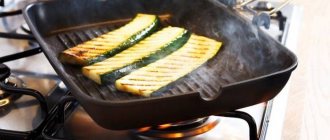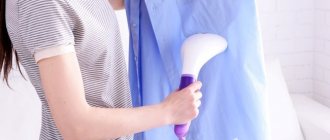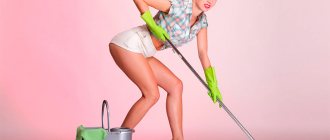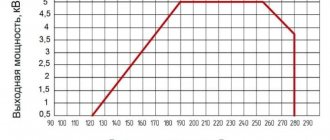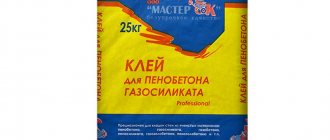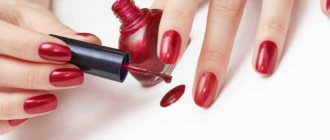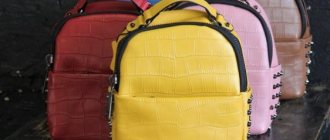02/13/201908/20/2019 Ivan Korabelnikov 0 comments
Do you like to iron your clothes after washing? There is hardly anyone who considers this activity a pleasure and not a forced necessity. After all, you won’t walk around in wrinkled clothes, will you? So you have to stand at the ironing board and iron out every wrinkle. But how great it would be to simplify and speed up this process!
Manufacturers of small household appliances assure us that there is a way out! A steamer is a miracle device that, using hot steam, quickly and effectively straightens all wrinkles, removes excess odors and makes every item simply perfect in appearance. But is this really so?
Today we will delve into the world of steamers, find out what they are, whether it is worth buying a device for home and how to use it. And at the same time, we’ll tell you how to choose a steamer so that it doesn’t gather dust on the mezzanine, but is in demand and effective.
What is a clothes steamer, how does it work?
This is a device that allows you to smooth out wrinkles on any fabric products using a jet of steam. If an ordinary iron irons with a hot metal surface and can damage the fabric, then the steamer does not directly come into contact with things, it acts through steam, and it is impossible for them to ruin the clothes. It does not leave shiny “smoothed” spots, does not make creases or folds, and eliminates foreign odors.
After steaming, items become softer because the fabric fibers are straightened, rather than compressed, as when ironing.
The design of the device is very simple and consists of:
- containers where water is poured;
- heating element;
- pump that creates pressure;
- valve
Water under the influence of high temperature turns into steam, which enters the iron with holes - that’s the whole principle of operation. The intensity of the steam supply will depend on the volume of the boiler and the power of the device.
Steamers are actively used in:
- clothing stores to bring newly imported goods into proper form;
- studio;
- wedding salons, since dresses are made from the finest materials with an abundance of decorative elements;
- in hotels, a curtain steamer is mainly used;
- dry cleaners and laundries.
What things should not be steamed?
Despite all their positive qualities, not all types of clothing and fabrics can be treated with a steamer.
- If the clothing label has a dry cleaning sign, then steam is contraindicated.
- It is better to take fur items to dry cleaning.
- Steam may stretch or shrink a wool sweater.
- The steamer will not smooth out overdried linen and cotton. In this case, it is better to iron the fabric while wet on a medium setting.
- The crossed out iron symbol indicates that this type of fabric cannot be treated with a steamer.
- Polyester is a synthetic fabric that is not recommended to be steamed, as after treatment stains may remain and the color of the product may change.
A steamer is an easy way to iron your wardrobe and a multifunctional assistant in everyday life. The main advantage of the unit is its simple operating principle, easy care of clothes, and quick assembly. Thanks to additional functions, you can wash glass and mirrors, care for furniture, and remove animal hair. For asthmatics and allergy sufferers, a necessary device that fights dust, lint, mites and foreign odors.
Advantages and disadvantages
What products can the miracle device process?
- Thin and delicate fabrics. We all know how difficult it can sometimes be to iron the thinnest fabric without burning it with the iron. But with a steamer you can do this without any problems, because the product does not come into contact with a hot surface, but only with steam.
- Ruffles, flounces, lace and frills. It is sometimes impossible to iron additional “decorations” on clothes. Ironing a pleated skirt can take a lot of time. While one is being ironed, the other is wrinkled. The steamer copes with decorative elements with a bang.
- Outerwear and suits. An iron does not always cope with lined clothes, unlike a steamer. Those who have schoolchildren know how hard it is to iron the hangers of jackets, and constantly take them to the dry cleaner - there’s not enough money.
- Curtains and curtains. It is impossible to iron huge canvases efficiently with a small household iron, no matter how hard you try, and you will definitely miss some area. But with the help of a steamer, you can bring the curtains into perfect shape right on the eaves.
- Upholstered furniture, carpets and toys. Hot steam can be used to treat mattresses, blankets, chairs and sofas - under the influence of temperature, bacteria and small living creatures in the form of ticks and bedbugs die.
What can't a steamer do?
- Completely replace the iron. He will never be able to make folds on trousers, so don’t rush to part with your old iron.
- Iron the bed linen. In a horizontal position, the device either does not work at all or does so for a short time. And hanging sheets vertically like curtains is somehow stupid and labor-intensive.
- Deal with dense fabrics. He doesn't have enough strength for drape or tweed.
- Remove stains. Unless the device is combined with a steam cleaner.
Steam generator and steamer - what's the difference?
If the steamer is used only for vertical steam treatment, then the clothing steam generator operates in horizontal mode. It consists of an iron and a water container.
The main differences are as follows.
| Steam generator | Steamer | |
| Principle of steam creation | Dry under constant pressure. | Wet without pressure. |
| Temperature | 160 °C | no more than 99 °C |
| Steam ready | 8 minutes | 60 seconds |
| Working position | No restrictions | Vertical |
Additional features
In everyday life, a steamer can significantly make life easier even if it is not used for its intended purpose. For example, you can:
- Remove adhesive labels from glass or ceramics - to do this, just hold the item under a stream of steam for a couple of seconds;
- Destroy moths and their larvae (just treat the back surface of the closet and clothes);
- Boil water for tea;
- Refresh the appearance of fur products and household items;
- Disinfect the premises.
Subscribe to our Social networks
Classification of steamers
A clothes steamer can be of several types.
Manual
Small compact models designed more for travel and business trips than for home use. They are a small container of water that is easy to hold with one hand. It is somewhat reminiscent of an ordinary electric kettle.
Of course, we are not talking about any power or super-efficiency. With this device you can quickly bring a shirt or dress that you took out of your suitcase into proper shape, but it cannot handle dense materials.
By the way, our resourceful people manage to boil water for tea in the device, and also use it as an inhaler.
MIE Piccolo
A hand-held clothes steamer that combines the function of a kettle. It has the same shape. The attachment with the iron and brush is removed, and the device turns into an ordinary kettle with a capacity of 0.5 liters.
The model is light and compact, weighs only one kilogram and does not take up much space. Power 1.2 kW, after switching on, steam is generated within a minute and a half. This is probably the only drawback - the lengthy preparation for work. Otherwise, it successfully copes with its functions.
The design is bright and attractive.
MIE Piccolo
Floor-standing
A vertical steamer, or floor-standing, is a more massive and larger unit. It is convenient to use at home and process several things at a time. It resembles a vacuum cleaner - it consists of a body that houses a container of water and a steam generator, as well as a steam hose with an iron at the end. Equipped with a rack on which it is convenient to hang clothes.
It features long continuous operation and high power. One of the disadvantages is the size - you have to look for a place to store it.
There are 2 types.
- Gravity flow. Steam from the container is supplied immediately to the working surface. This device is not too different from a manual one; the power is not enough for high-quality ironing of dense fabrics.
- With steam pressure. The design includes a valve that creates the necessary pressure and, accordingly, the strength of the steam jet increases. It penetrates deeper into the fabric and smoothing becomes much more effective. This type of device is suitable for all types of fabrics, including thick ones. The effect is short-term; in order to receive the next “portion” of a powerful jet, you need to wait a while.
Kitfort KT-915
The 2 kW vertical steamer has a 1.6 liter tank and can operate continuously for three quarters of an hour. Its peculiarity is that it steams things not only vertically, but also horizontally. Users note excellent ironing and steaming, especially for those items that are difficult to iron.
The iron is wedge-shaped, it has more holes than an oval one, which means better steaming. The device weighs a little more than five kilograms, but it can be moved around the apartment using wheels.
Disadvantages include an inconvenient trouser strap, cyclic steam release, and a short cord. And with horizontal steaming at maximum power, you can get burned.
Kitfort KT-915
Combined
“2 in 1” devices have expanded functionality and are much more expensive, since they essentially combine two devices at once.
The most popular are:
- steam cleaner with steaming function;
- steamer with cleaning function;
- steamer + iron.
Philips GC617/60 ProTouch
This is not just a steamer, but a real ironing plant - the set comes with a double stand and a special board for convenient ironing. It can be positioned vertically or at an angle of 30 degrees.
Power – 2.2 kW. Pump pressure – 3 bar. The water container is large and removable, designed for 2 liters. An interesting feature of the model is its anti-scale protection; the tank can be filled with unfiltered tap water.
Among the shortcomings, users note disappointment that the device does not perform the functions of a full-fledged iron, cannot iron bed linen, and at maximum mode it can “spit” water.
Philips GC617/60 ProTouch
The best brands
Let's consider the professional rating of the best brands of popular manufacturers in Russia:
- Philips. This is a Dutch brand. Consumers know it and trust the products. The company produces floor-standing, with manual models. The design is ergonomic. Excellent assembly and the device works without interruptions.
- Kitfort. Russian brand. The devices are produced in China. At the factories, specialists carefully monitor that the products are of high quality. More popular than other models are floor-standing Kitfort. They are inexpensive, high quality, with excellent technical support. characteristics.
- Polaris. The holding is considered international and specializes in the production of various small appliances used in everyday life. There are factories both in the Russian Federation and in China. The price of the product is affordable and the quality is good. Polari competes on equal terms with more popular brands.
- MIE or Modern Ironing Equipment. Not all manufacturers of household appliances know this brand, since it has a narrow specialization. The plant produces only ironing household appliances, including steamers and devices that help with cleaning. There are also devices that are used to care for fabrics and various clothes. Prices for MIE products are average, and the quality is good.
- Endever. This brand is from the famous Kromax Group from Sweden. They produce household appliances that help clean the house. They are produced as floor-standing ones, with manual (compact) steamers. The brand is inexpensive.
How to choose a steamer - main criteria and characteristics
In order not to get confused in the store from the abundance of models, you need to know in advance what parameters to focus on.
Power
The more powerful the steamer, the more steam it will produce.
Budget models have a power of 1.2 - 1.5 kW. Steam intensity is approximately 25-30 g/min. These are quite low numbers; steaming clothes can take a long time.
More expensive devices have indicators that are an order of magnitude higher - 2.3-2.8 kW with a flow rate of 50-90 g/min. The steam jet will be powerful, and the steaming process will be quick and of much higher quality.
Water tank volume
The more water in the container, the longer the battery life of the device. The maximum tank volume is 3.5 liters.
It’s best if the tank is removable, then you don’t have to carry the entire apparatus to a “watering place” or water for topping up.
Steam supply and pressure
The more intense the steam is supplied, the more it penetrates into the structure of the material, which means it will be able to steam dense and heavy fabrics. Look for an intensity rating of 30 g/min in the technical specifications.
A pressure of 3-3.5 bar is already considered a good criterion.
Outsole material
There are plastic and metal surfaces. The latter are preferable, especially if they have a heating function. Firstly, condensation does not form, secondly, the intensity of the steam jet increases, and thirdly, they are much more durable.
Modes
Don't forget that a steamer is not an iron - it does not damage the fabric because it does not come into direct contact with it. Therefore, all kinds of modes are nothing more than a marketing ploy.
But if you are concerned about the safety of natural or delicate fabrics, then choose a steamer with a function to reduce the steam output.
Working hours
Directly depends on the capacity. Models with a tank volume of more than one liter last a long time.
Device weight
A manual steamer should a priori be lightweight. After all, you have to hold it with one hand, and you won’t be able to hold a heavy device for a long time.
For floor-standing models, weight does not play a big role, especially if they are equipped with wheels for easy movement. But usually it does not exceed 10 kg.
additional characteristics
- Special instructions regarding water quality. Some devices are so “capricious” that they require exclusively clean water, even distilled.
- Intensity mode. A very useful function that allows you to get a powerful jet and steam stubborn creases.
- Accessories. The brush attachment also makes it possible to clean clothes, and the crease clip allows you to renew them on your trousers. But the thermal glove is absolutely useless.
- Auto power off. As soon as the water in the container runs out, the device turns off.
- Add water during operation. You can add water at any time, without waiting for the device to cool down.
- Wheels for easy movement. Why carry something in your hands that can move on its own?
conclusions
When choosing a clothes steamer, it is important to consider the following points:
- A steamer is an excellent device for caring for various types of fabrics..
- Types of steamers have different purposes and functionality , their choice depends on the purpose.
- The use of such a device is quite extensive; it is used not only at home, but also in hotels, studios, shops , etc.
- Steamers can have a large number of different functions and modes, which makes the devices multifunctional.
- The device can refresh and iron things using steam.
How to use a steamer
Using this device is as easy as using an iron.
- Prepare your clothes - hang them vertically on hangers.
- Pour water into the container. It is advisable that it be filtered to avoid scale formation.
- Connect the device to the network, press the power button.
- In just a minute, the indicator will show you that the steamer is ready for use.
- You need to hold the iron with the holes facing away from you - the steam is very hot and can burn you. Follow safety rules, do not point the switched-on device towards people, even as a joke.
- Press the steam button. Move the iron at a distance of 5-10 cm from the surface of the fabric. The easiest way to iron clothes is with a top-down motion. Treat “capricious” folds and creases several times.
- Do not direct steam at the same place for a long time - the fabric will get wet.
- After steaming is complete, unplug the device, let it cool and put it back.
Useful tips
- Before using the device for the first time, be sure to read the instructions for use.
- It is easier to steam outerwear if it is fastened with buttons or a zipper, and you can place rolled towels in the sleeves.
- The smallest parts are steamed first - collars, cuffs, pocket flaps. Then the sleeves and the rest are processed.
- Do not place your palm under the fabric, as you may get burned. For this purpose, use a thermal glove.
- The steamed product should hang on hangers for some time to cool and dry.
- Do not steam contaminated items; the dirt will only become more absorbed into the structure.
- Never use a steamer for products made of natural fur (fur coats, sheepskin coats, hats). When heated above 50 °C, the leather base loses its elasticity and collapses.


